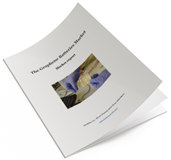Applied Graphene Materials announces a fundraising of £9 million and reports financial results
 Applied Graphene Materials reported a fundraising of £9 million under a placing of shares. The company said the funds would be used to support its "joint development activity" with customers, development of its Structural Ink program and to provide working capital for scaling up production capacity.
Applied Graphene Materials reported a fundraising of £9 million under a placing of shares. The company said the funds would be used to support its "joint development activity" with customers, development of its Structural Ink program and to provide working capital for scaling up production capacity.
The company also reported its financial results for the year ended July 31, with a loss that narrowed modestly to £4.3 million from £4.5 million the year prior. Revenue was £97,000 (up from £75,000 the year before). Cash on hand fell to £4.7 million at the end of July from £7.7 million the year before.








